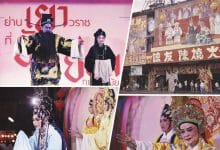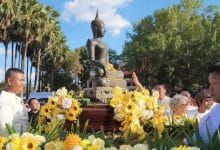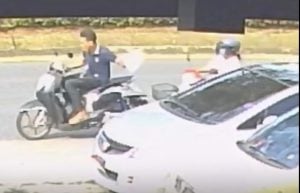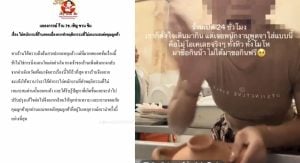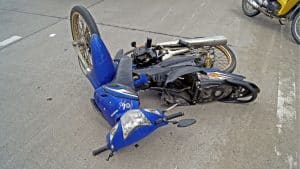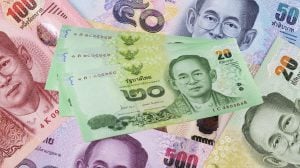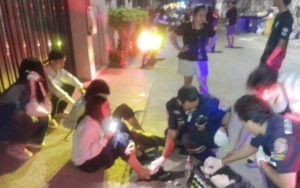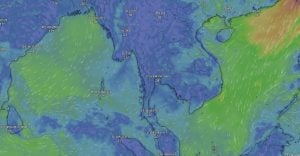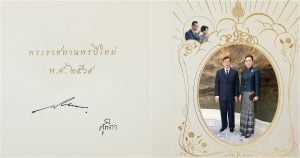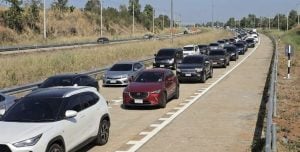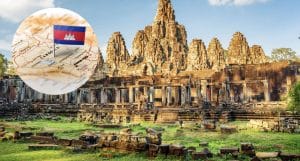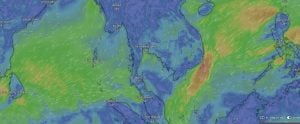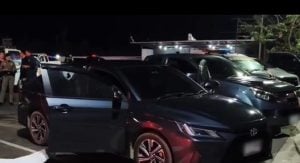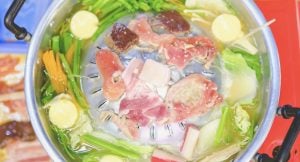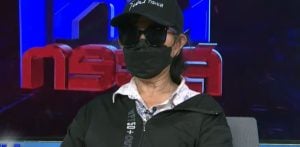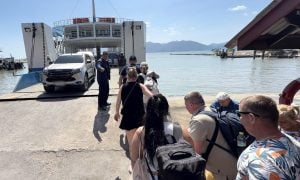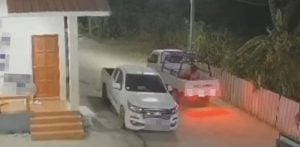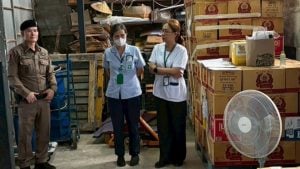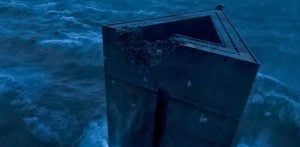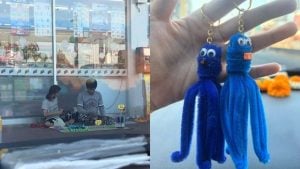Why trucks and buses in Thailand are moving works of art
The decorative paintings and modifications on Thai vehicles that are done for reasons that you might not have expected
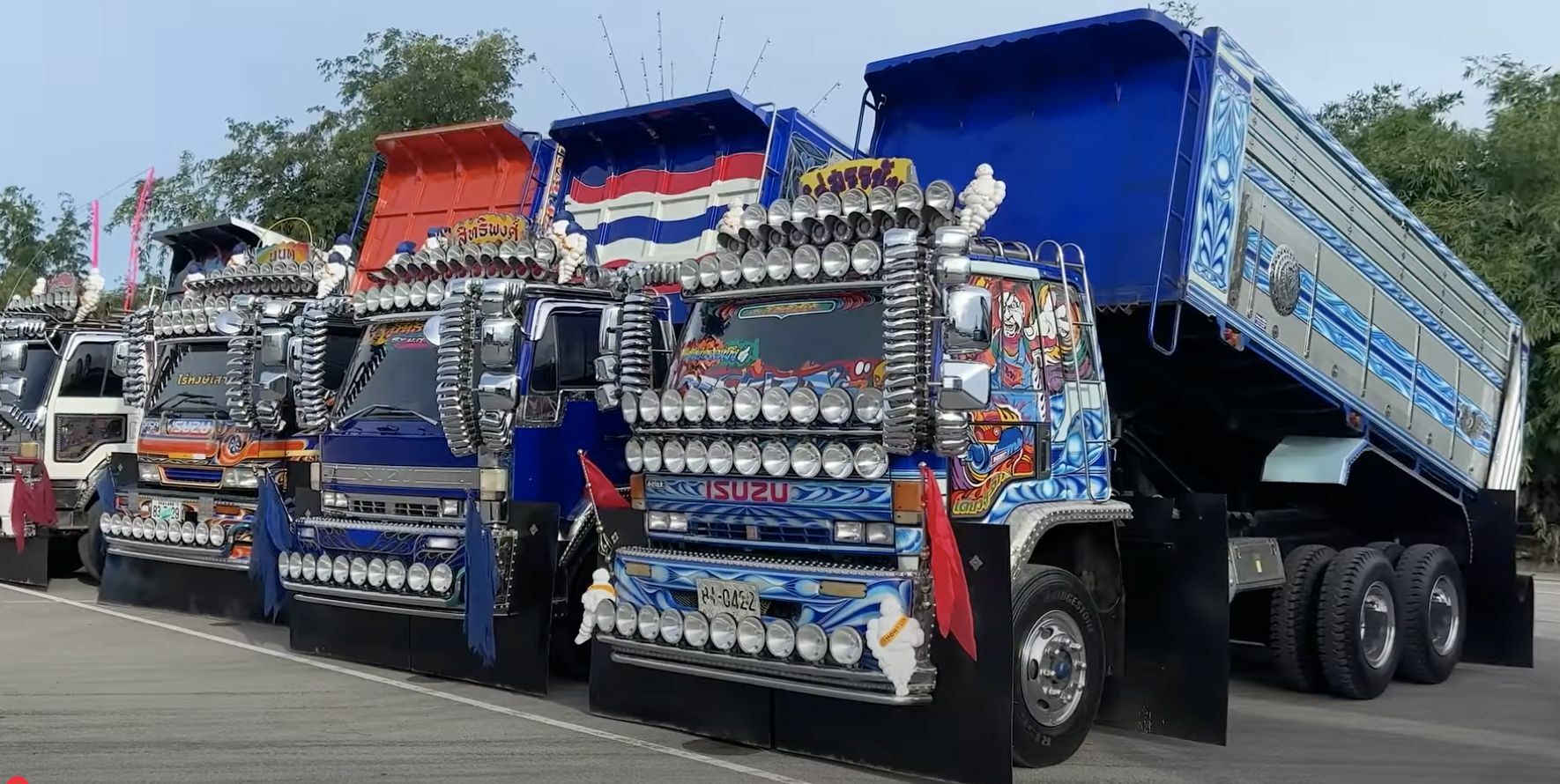
Light bouncing off six dozen chrome-coated side-view mirrors. Rows of Michelin Man figurines sit proudly on the cabin roof. Sprawling intricate murals depicting anime characters, cartoon superheroes, and fantastical dreamscapes.
If any of these images are familiar to you, then you’ve likely seen the elaborately decorated and modified lorries and buses in Thailand. Perhaps you’ve also wondered why these Thai vehicles are so elaborately decorated.
In Thailand, decorated lorries and buses aren’t just vehicles. They’re canvases, status symbols, and personal statements altogether. The sheer variety of designs reveals an artistic impulse to blend local pride with global imagination.
While they may serve practical purposes, like warding off thieves or attracting customers, these decorations are primarily expressions of individual identity in a country where drivers often own and operate their own vehicles. Their modified exteriors, whether painted by professional artists or tricked out with imported chrome, speak to broader cultural values: aesthetic experimentation, familial ties, and a desire to stand out in a crowded world.
On this page
| Jump to Section | Summary |
|---|---|
| Anime art, colourful cartoons, and traditional imagery on Thai buses | Thai buses feature diverse airbrushed artwork influenced by global pop culture, including anime, American cartoons, and Thai traditional motifs. These designs are for personal and commercial reasons, rather than conveying religious or political messages. |
| Thai truck art: Colourful paintings, decorations, and modifications | Thai truck art reflects the drivers’ personal pride and commercial aims. Decorations include vibrant paintings and chrome embellishments, often for security or aesthetic reasons. These modifications are generally illegal but rarely enforced due to their cultural value. |
| Cost of installing these modifications | Modifications, such as chrome front grills and side-view mirrors, can be very expensive, with costs reaching up to 180,000 baht for a chrome grill. These modifications serve as a symbol of wealth and pride among drivers. |
Anime art, colourful cartoons, and traditional imagery on Thai buses
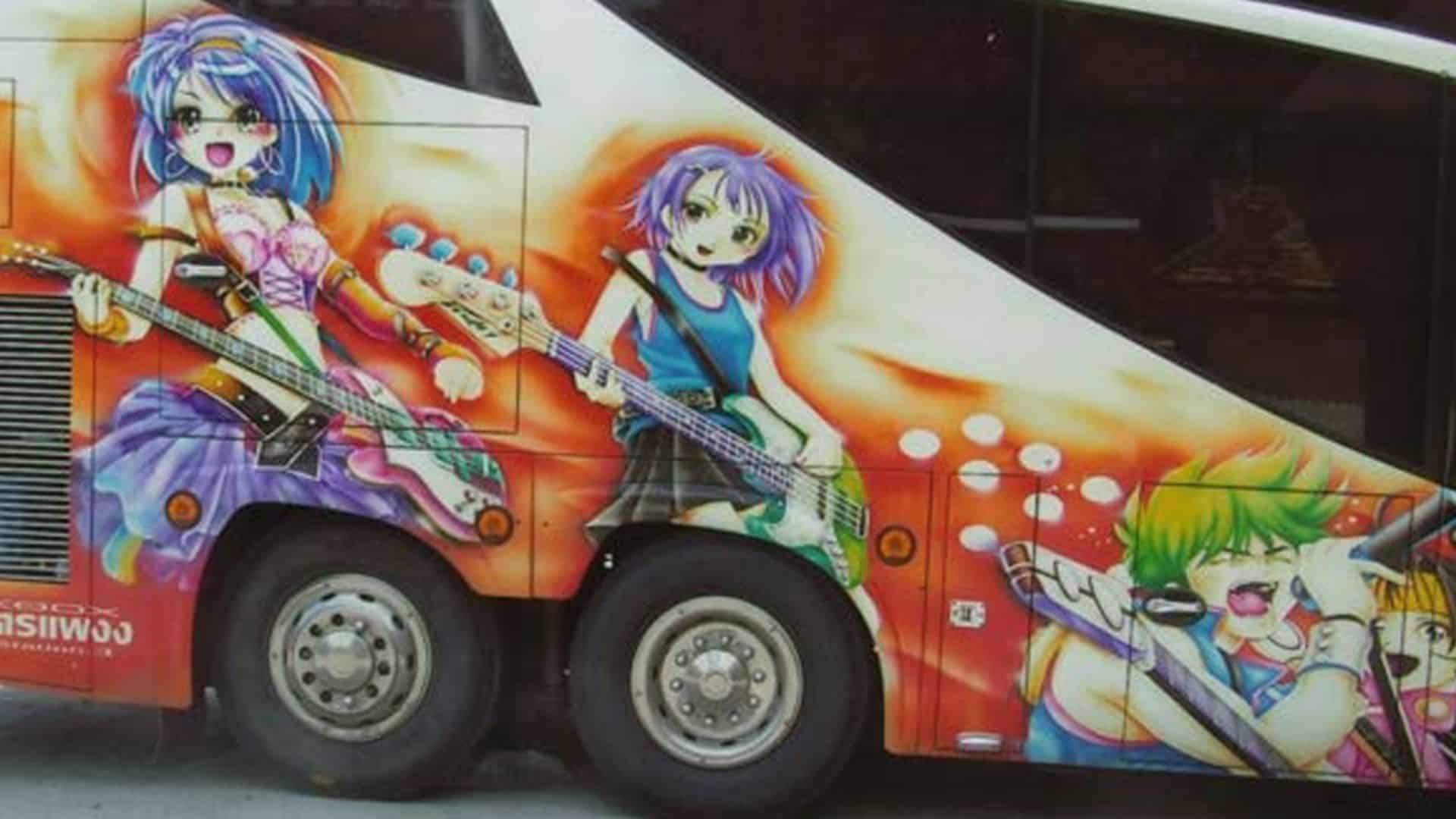
A 2013 study conducted by anthropologist Erik Cohen found that the airbrushed paintings on Thai charter and coach buses have no unifying style specific to Thailand, unlike truck art in other countries like Pakistan and the Philippines.
Rather, the artwork often draws on four major cultural categories: American popular culture, Japanese and Korean popular culture, Thai “traditional” culture, and Chinese “traditional” culture. This suggests that Thai vehicle decorations are a globalised art form, drawing on motifs from cultures with dominant global presences.
Furthermore, Cohen was unable to identify any overt religious or political messages on Thai buses. Occasionally, there are depictions of religious symbols (like the Christian cross) or historic political figures (like Fidel Castro), but these images are often chosen for their aesthetic appearances without a comprehensive understanding of their symbolic meanings.
Conversely, religious or political symbols on vehicles in other parts of the world are usually intended to represent their original meanings. For example, some Hindu tuk-tuk drivers in India will decorate their vehicles with images or mantras relating to Hindu gods to express their devotion and possibly attract favours like wealth and protection.
The lack of religious or political messages on Thai coach buses points to a more aesthetic, personal, and commercial motivation for individual distinction.
Thai truck art: Colourful paintings, decorations, and modifications
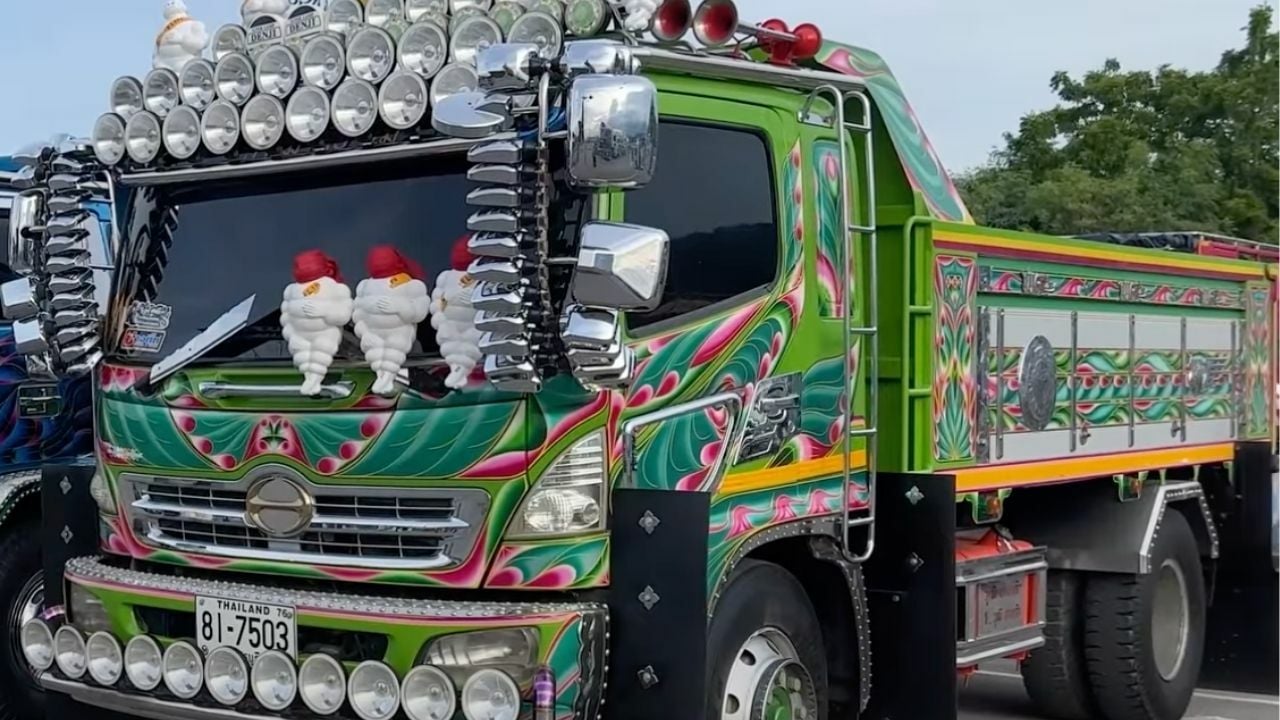
These findings are largely consistent amongst modified and painted lorries as well. The most popular brands for these large trucks in Thailand are Hino trucks, Toyota trucks, and Isuzu trucks. However, these brands only equip their vehicles with the standard components and basic colours. So, how and why do many Thai drivers go out of their way to decorate their trucks?
“It’s been a dream to create my own fancy truck,” truck driver Wongdara Wichukorn said in a 2018 interview with Agence France-Presse.
Wongdara is the owner of a bright green Isuzu truck with a unicorn on the side, designed by his daughter. The unicorn draws attention towards the vehicle, which Wongdara hopes will deter fuel thieves from targeting his truck.
“What do I get out of it? I get the feeling of pride when people come to look at my trucks and praise how beautiful they are.”
Wongdara’s testimony (amongst others) is evidence that many Thai drivers have personal and commercial reasons for wanting their vehicles to stand out through truck art.
Paintings are not the only way some of these lorries are decorated. Many have additional bells and whistles too…literally! Modifications like chrome grilles, exhaust pipes, side mirrors, and headlights frequently adorn these elaborate trucks.
While extensive vehicle modifications are technically illegal in Thailand, this law is rarely enforced due to the general admiration for the artistic and cultural value of these vehicles.

How do drivers achieve these transformer-looking vehicles? The Thaiger spoke with Nathpapas Changchun, a representative of Soonchai Nakhonpathom Group, for answers.
The Soonchai group is an automotive coachbuilding company founded in 1970 that modifies vehicles according to client needs. For example, one of their clients worked in elephant transportation, and so Soonchai installed a hydraulic system to allow elephants to be loaded into the lorries.
The Soonchai Group is also popular amongst drivers wishing to decorate their vehicles. Soonchai has teams of artists who paint the trucks either by hand or by airbrushing.
According to Nathpapas, clients will request colours or designs for their truck art that are personally appealing or significant to themselves or their families:
“If there’s an agriculture truck, for example, and they request a One Piece [a Japanese anime show] cartoon. They are not in the video business, but maybe their child likes it.”
Cost of installing these modifications
For modifications like additional side-view mirrors and headlights, Soonchai does not produce or sell these extra components since they are technically illegal. However, they will install them if provided by the customer.

These installations can be extremely pricey. For example, a chrome front grill and installation could cost around 180,000 baht. Each panel of side-view mirrors (usually around 10-12 mirrors in each panel) can cost around 60,000 baht. Each Michelin Man figurine, which is given to drivers each time they replace their set of tires with Michelin Tires, costs around 2000 baht to install.
Due to these hefty price tags, Nathpapas suggested that these decorative accessories are a way for drivers to display their wealth and pride. In fact, there are a few annual gatherings of these extravagant vehicles during which owners will share their own and admire others. At some events, there are even lorry races!
Whether for beauty, business, or bragging rights, Thailand’s bus and truck art reflects the imaginations of the people who drive them. On streets and highways across the country, these vehicles double as moving canvases and personal billboards. Ultimately, they transform Thailand’s roads into vibrant galleries of pride and personality.
Works Cited:
Latest Thailand News
Follow The Thaiger on Google News:
